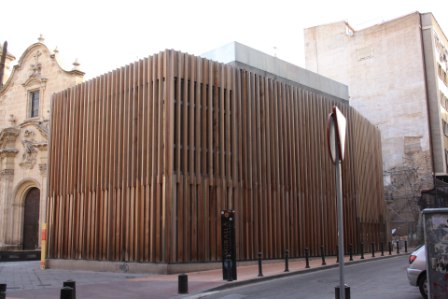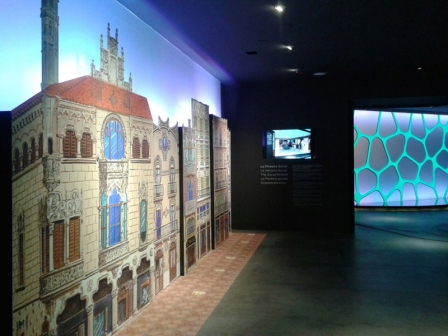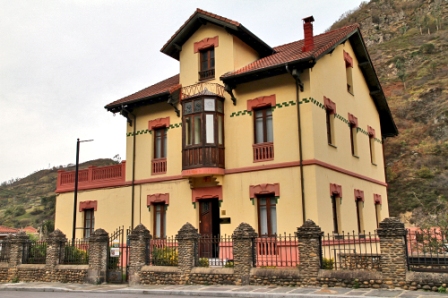November 19, 2014
Global Seminars & Invited Speaker Series
HERITAGE AND SPEECH. A FRAMEWORK DE REFERENCE LETTER
Heritage interpretation centres: museums without pieces?
D. René Payo Hernanz
University of Burgos
The phenomenon of Interpretation Centers is linked to the conceptual revolution introduced by Freeman Tilden who in 1977 in his work Interpreting our Heritage defined the concept of "heritage interpretation" as "an educational activity that aims to reveal meanings and interrelationships through the objects of people with each other and the linkages of past and present". Freeman Tilden had a broad concept of this "educational activity". He did not refer only to schoolchildren, but to an action on the whole population. Morales Miranda defines heritage interpretation as "a creative process of strategies that financial aid connect the visitor intellectually and emotionally with the heritage property so that he can appreciate and enjoy it".
One of the means used, when interpreting heritage, is currently the Interpretation Center, which emerges as a physical environment (although in recent years some virtual ones have also been developed), in which with different methodologies they try to give the keys that allow a perfect understanding of the heritage property.
The phenomenon emerged strongly in the Anglo-Saxon world in the mid-20th century, although there are earlier precedents. In Spain, it has had its plenary session of the Executive Council development since 1990, but especially since 2000. The first problem we face when dealing with these centers is that of terminology. Thus, in addition to the name Interpretation Center, we find ourselves with the name of "on-site" Museum or Visitor Center. In all three cases, the aim is to develop an interpretative task. In the first, fundamentally before the visit of the property, in the second by exhibiting original pieces -especially in the world of archaeology- and in the third it is a question of preparing the visitor both from the point of view of the contents and from the point of view of the necessary intendancy.

Interpretation center of the Murcia city wall
The typology of these centers is multiple. A first division would be that based on the interpretation systems. We would find a set of centers dominated by new technologies and another based on more traditional explanatory systems.
A second division would be that which refers to the good interpreted. Perhaps the most numerous are the Archaeological Interpretation Centers because the elements that appear are usually difficult to understand for people who are not prepared and have no knowledge of the subject. They are usually located next to the archaeological sites. Sometimes, they can exhibit some pieces and sometimes the site itself, partially or totally, becomes part of the center. This is the case of Medina Azahara (Córdoba) or La Olmeda (Palencia), which have become true on-site museums. They have arisen, on many occasions, in connection with archaeological finds linked to our historic cities. In this sense, we have dozens of cases, of greater or lesser importance, in cities such as Valencia (La Almonia), Murcia (of the Arab wall) or Zaragoza (Roman Forum and Theater), to cite just a few outstanding examples. In many cases these archaeological interpretation centers have the advantage of solving, while explaining the contents, the conservation of the elements found, because their architectural Structures cover, protect and musealize remains that otherwise would be very difficult to preserve.

Modernism Interpretation Center in Reus
Another subject center is one that is designed to interpret unique buildings (cathedrals, monasteries, castles, palaces, etc.) or sets of goods integrated in collections such as museums. Also common are those dedicated to the interpretation of intangible assets (Easter, Carnival, popular traditions, etc.). Those linked to ethnographic and industrial heritage are gaining more and more strength. In the same way, those that explain a group of dispersed but homogeneous assets (Romanesque, Modernism, etc.) or those of historic cities and that also have the function of preparing, from an organizational point of view, the tourist visits have reached a great development .
A third typological division is that which derives from the space in which these centers are located. Thus, those that are installed in the property itself, without any solution of continuity with it, are common. We also find others that are nearby, but not in the property itself. There are also frequent new centers and others that are located in old buildings, some with heritage values, but which do not form part of the property or of the group of interpreted properties. In this sense, a positive aspect of the proliferation of these spaces is that they have served to recover important properties (churches, monasteries, mansions, factories, stations, etc.) with heritage values that otherwise would most likely have disappeared.

Interpretation center of the Bustiello mining town (Asturias)
The interpretation centers have proliferated in Spain thanks to the existence of a favorable situation that derives, in the first place, from the greater training and interest of the population for the Heritage that has gone together, as we have pointed out, with the phenomenon of Cultural Tourism. This has created an awareness in the public administrations very favorable to the development of this subject of projects that, on many occasions, was linked to the idea that its implementation was not only beneficial from a cultural perspective but also economically since it could result in the increase of visits and in the dynamization of the surroundings of the property. On the other hand, the wide range of subsidies (European, national, regional, provincial and local) have made many of these initiatives possible.
The emergence of these centers, which currently number in the hundreds in our national geography, also has a number of weaknesses. The first is precisely that of their high issue that sometimes makes us lose the real perspective of the importance of the property, since sometimes the patrimonial transcendence of the same is minimal. If many of these centers were born, as we have just pointed out, guided by the idea of generating economic resources, at the moment of truth we find that many of them are also very little visited and unsustainable not only from an economic perspective but also partner-cultural. The scarce importance of the property or the great difficulty of access to the element to visit and interpret have been and are two of the reasons for their failure.
Another of the weaknesses of these centers lies in the fact that, on occasions, they end up imposing themselves on the property itself. Sometimes it is the excessiveness of the architectural project -driven by an administration and carried out by a firm of architects both eager to leave their mark- which overshadows the interpreted, engaging in a conflictive dialogue with the environment to which they sometimes impose themselves. In other cases, there is such an application B of new technologies that these generate such great expectations that at the time of the visit to the good are disappointed. Nothing worse, as Morales Miranda points out, than that there are interpretation centers that have more visitors than the interpreted property, since the concept of these facilities should never be that of a Theme Park but rather that of a place that prepares, creates expectations and generates the need for visit , which is what is truly important. On the other hand, many of the centers that develop their activities on the basis of new technologies run the risk of becoming obsolete in a short time if they do not develop a continuous tension of a renovating nature.
All this means that, from the generally positive experience of more than two decades since their emergence, we have to consider not only the nature of these centers, but also the appropriateness of their implementation, in some cases, and the approaches to sustainability partner-cultural and economic that should govern their creation as well as the balance between interpretation systems and the size and characteristics of the infrastructures that host them.
